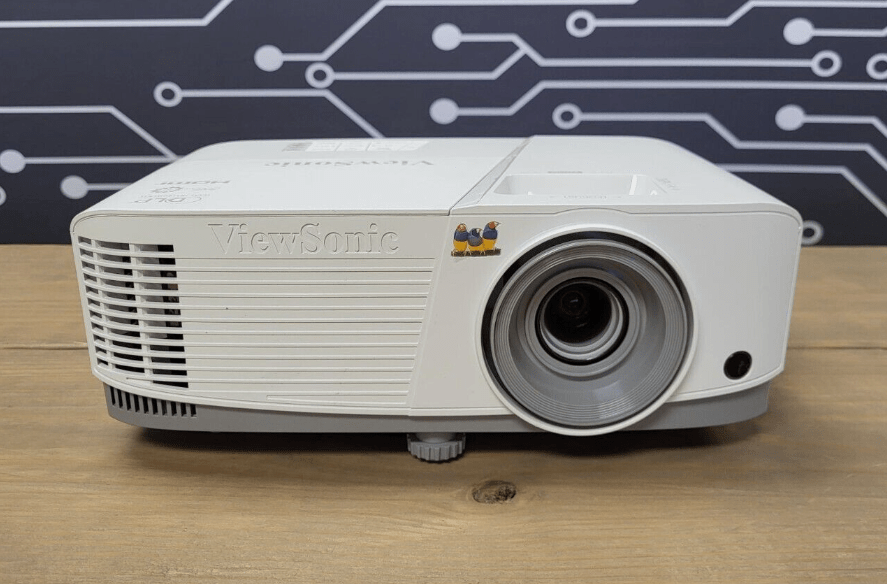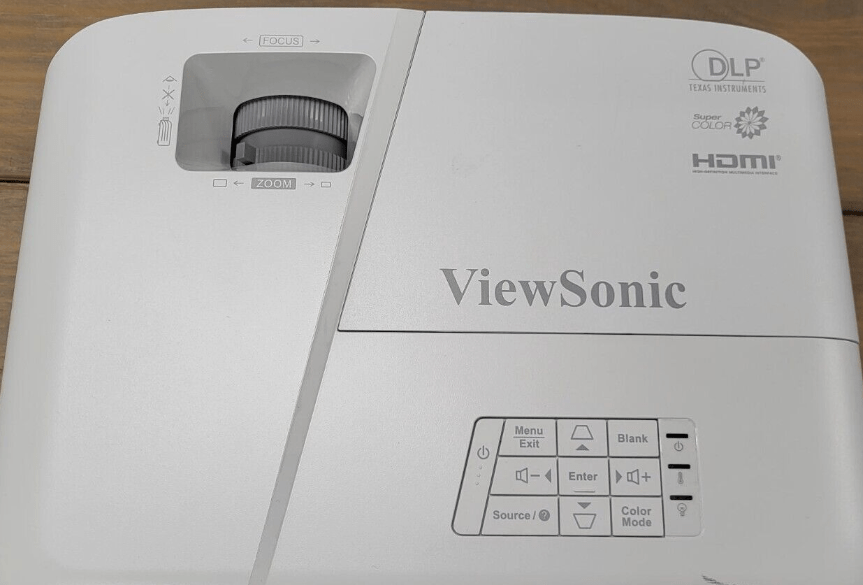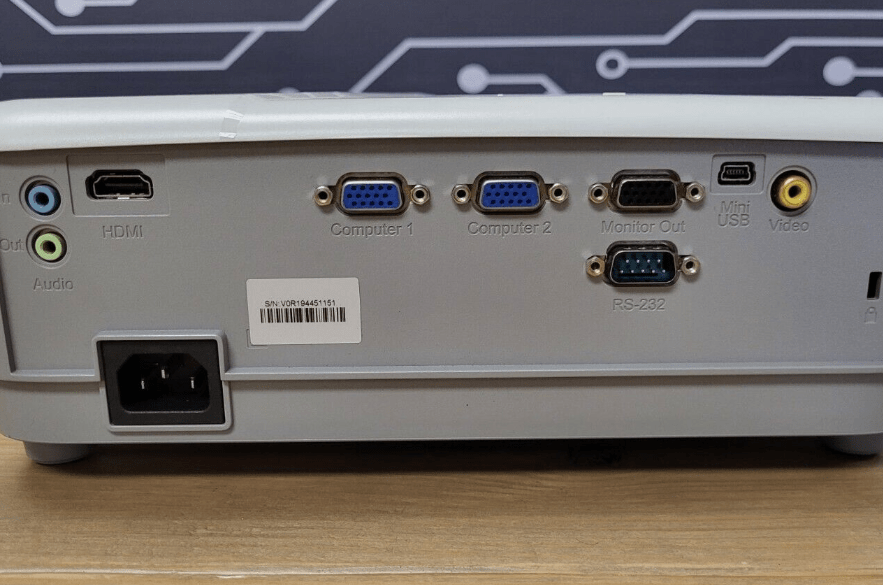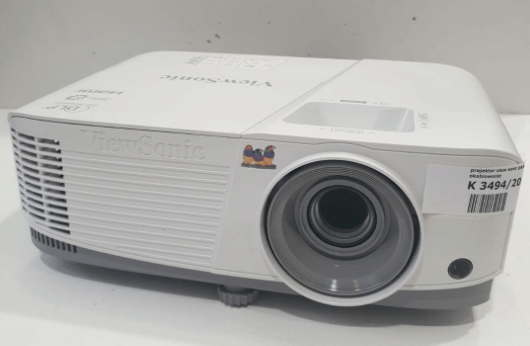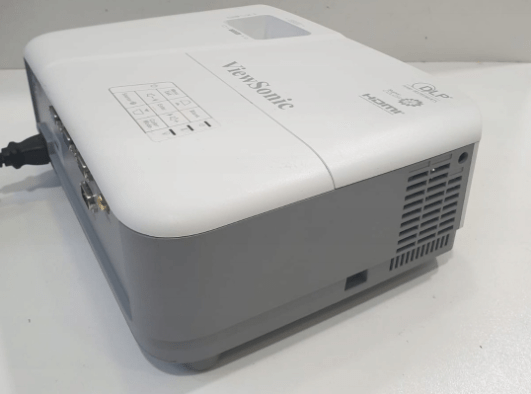At gagadget.com, your trust is our priority. We follow strict quality standards in our research, tests, and analysis of video projectors, to give you the best experience. Learn more
Viewsonic PA503S vs PA503W
Hey everyone, Jim's here. Today, I'm comparing two popular business and education projectors from ViewSonic: the PA503S and the PA503W. Both offer bright images, flexible connectivity, and energy-saving features at an affordable price. But their main difference in resolution - SVGA (800x600) on the PA503S vs WXGA (1280x800) on the PA503W - can make one better suited for your needs.
I've tested both projectors hands-on, evaluating image quality, ease of use, performance, and overall value. In this in-depth ViewSonic PA503S vs PA503W comparison, I'll help you decide which one is the smarter buy for your classroom or meeting room. Let's get started!
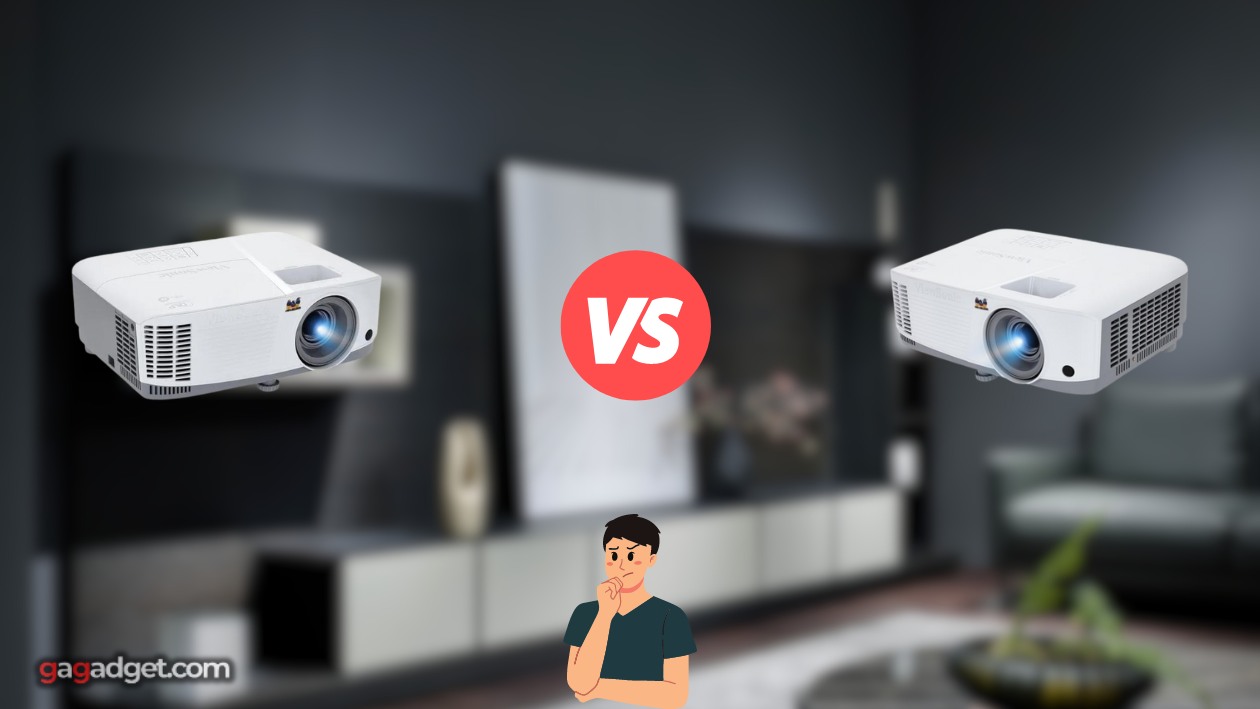
ViewSonic PA503S vs PA503W: Quick Overview
Here's the key takeaway: The ViewSonic PA503S and PA503W are extremely similar projectors overall. Both offer 3,600 ANSI lumens brightness, 22,000:1 contrast ratio, 3D support, and extensive connectivity options. The main difference is resolution, with the PA503S at 800x600 (SVGA) and the PA503W at a wider 1280x800 (WXGA). The PA503W also has a slightly shorter throw ratio.
For most users, I recommend the ViewSonic PA503W. The higher WXGA resolution offers noticeably more detail and screen real estate for complex presentations or spreadsheets. And the shorter throw is helpful for smaller rooms. It's well worth the typical $50 premium over the PA503S. But if you just need a bright, reliable projector for basic PowerPoints or educational content, the PA503S is still an excellent value.
Table of Contents
- ViewSonic PA503S vs PA503W: Full Comparison
- ViewSonic PA503W vs PA503S: Design
- ViewSonic PA503S or PA503W: Owner Reviews
- ViewSonic PA503S and PA503W Alternatives
- Should You Buy the ViewSonic PA503S or PA503W?
ViewSonic PA503S vs PA503W: Full Comparison
| Specs | ViewSonic PA503S | ViewSonic PA503W |
| Image |

|
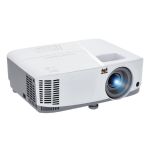
|
| Native Resolution | 800x600 (SVGA) | 1280x800 (WXGA) |
| Brightness | 3,600 lumens (ANSI) | 3,600 lumens (ANSI) |
| Contrast Ratio | 22,000:1 | 22,000:1 |
| Display Technology | DLP x1 | DLP x1 |
| Color Processing | 10-bit | 10-bit |
| Lamp Life | 4,500 hrs (normal) / 15,000 hrs (Eco) | 4,500 hrs (normal) / 15,000 hrs (Eco) |
| Throw Ratio | 1.96 - 2.15 | 1.55 - 1.70 |
| Digital Zoom | Yes | Yes |
| Keystone Correction | Vertical | Vertical |
| 3D Support | Full HD 3D | Full HD 3D |
| Ports | HDMI, 2x VGA in, VGA out, Composite, RS-232, USB, audio in/out | HDMI, 2x VGA in, VGA out, Composite, RS-232, USB, audio in/out |
| Dimensions (W x D x H) | 11.3" x 8.7" x 4.3" | 11.3" x 8.7" x 4.3" |
| Weight | 4.9 lbs | 4.9 lbs |
| Release Year | 2017 | 2017 |
Starting with image quality, the main difference between the PA503S and PA503W is resolution. The PA503S has native SVGA resolution (800x600), while the PA503W bumps that up to WXGA (1280x800). In practice, this means the PA503W can display 60% more pixels on screen - 1,024,000 vs 640,000.
This extra detail is most noticeable when projecting data-heavy content like spreadsheets, web pages, or text-heavy slides. Small fonts stay sharper and more legible on the PA503W, especially at larger screen sizes. Photos and videos also appear crisper with finer textures. For everyday PowerPoints or educational content, the PA503S' SVGA resolution is still perfectly serviceable. But if you want maximum clarity for complex presentations, the PA503W is worth the upgrade.
Brightness is identical on both models at a very solid 3,600 ANSI lumens. This is more than enough to combat ambient light in most classrooms and conference rooms. Even with some lights on or windows un-shaded, both projectors maintain a clear, colorful picture up to 120" or larger. The high lumens also help compensate for the PA503S' lower resolution on big screens.
Contrast is also the same at a specified 22,000:1 dynamic ratio. Both projectors use DLP (Digital Light Processing) display technology for deeper blacks and more vibrant colors than many LCD competitors in this price range. In real-world use, the image pops nicely with good depth and saturation, though the darkest shadows can look a bit gray in a fully dark room.
One related advantage of the PA503W's WXGA resolution is a wider 16:10 native aspect ratio (vs the PA503S' 4:3). This matches the proportions of most modern laptops and streaming video, so you'll see less of the black bars on top/bottom. The PA503W can also natively project 720p HD content without letterboxing.
For PPT slides and standard documents, both projectors include a handy AKC feature to quickly square up the image if you're projecting from an angle. Manual 4-corner adjustment is also available for finer control over geometry.
Installation is simple on both the PA503S and PA503W thanks to their 1.1x zoom and easy lens controls. However, the PA503W does have a slightly shorter throw ratio (1.55 - 1.70 vs 1.96 - 2.15). This lets you project a larger image from the same distance, which can be helpful in smaller rooms or tight conference tables. For a 120" diagonal at 16:10, the PA503W needs about 10.5ft vs the PA503S needing 11.5ft.
Both projectors also feature ViewSonic's SuperColor technology promise, designed to create a wider color gamut for more realistic images. I found the difference to be subtle vs older budget DLPs, but the colors did look great for this price tier - natural, well-saturated, and close enough to the sRGB standard for most business and educational uses.
In terms of audio, both have a small built-in 2W speaker that's fine for adding some narration or sound effects to presentations in a pinch. But for any critical listening or larger rooms, you'll definitely want external speakers connected to the 3.5mm audio output.
Noise levels are reasonable on both projectors, rated at 27dB in Eco mode. The PA503W is a touch louder at full brightness due to the higher-wattage lamp (200W vs 190W) needed for the higher resolution. But even then, it's easily masked by the internal fan and does not beat the integrated speakers.
Lamp life is excellent at up to 15,000 hours in Eco mode on both units - enough for 10+ years of heavy school or office use. Replacement bulbs are also relatively affordable at around $70.
Rounding out the feature set, both the PA503S and PA503W offer 3D playback support, VGA output for an external monitor, and RS-232 control for integration with interactive whiteboard systems. The 3D is a nice extra for the occasional science demo or movie day, though you'll need DLP-Link glasses (not included). The 3.5mm audio out also works for MHL-compatible streaming sticks plugged into the HDMI port.
ViewSonic PA503W vs PA503S: Design
The ViewSonic PA503S and PA503W share the exact same chassis design. Both have a clean white plastic casing with rounded edges, offset lens, and a matching white remote. Build quality feels solid for the price, with good fit and finish and ample ventilation.
ViewSonic PA503S Design
ViewSonic PA503W Design
The only visible difference is the model number printed on the front panel. Dimensions and weight are identical at 11.3" W x 8.7" D x 4.3" H and 4.9 pounds. This makes both projectors easily portable between classrooms or conference rooms as needed, with optional carrying cases available.
The included remote offers direct access to auto keystone correction and all the major picture settings. It's not backlit but the most important buttons are intuitively placed for no-look operation after a little practice.
The connection panel is logically organized with all the ports clearly labeled. You get HDMI 1.4, two VGA inputs and one output, composite video, RS-232 serial, and a USB port for powering streaming sticks. The VGA ports are a nice extra for older PCs that may not have HDMI.
ViewSonic PA503S or PA503W: Owner Reviews
Let's see what actual buyers are saying about their experiences with the ViewSonic PA503S and PA503W projectors:
ViewSonic PA503S Owner Reviews
Praises: "The image quality is fantastic for the price. The colors are vibrant, the contrast is great, and it's bright enough to use in a typical classroom with the lights on."
"Setup was a breeze. The auto keystone correction works well and the zoom/focus dials allow for quick fine-tuning. We had it up and running in minutes."
***
Drawbacks: "The SVGA resolution is a bit low by modern standards. Small text can look pixelated, especially on larger screens. But for everyday PowerPoints and videos, it's perfectly adequate."
"The built-in speaker is pretty weak. It's fine for a small conference room but for a classroom, you'll definitely want external speakers or a sound system."
ViewSonic PA503W Owner Reviews
Praises: "The WXGA resolution is a big step up from older SVGA projectors. Spreadsheets and text documents look much sharper, even at larger sizes. Well worth the extra money."
"This projector is super bright - we're using it in a large classroom with windows and it has no problem cutting through the ambient light. The colors also look great, very natural and well-saturated."
***
Drawbacks: "It runs a bit noisier than our old projector, especially on the brightest lamp setting. Not terrible but noticeable during quiet moments."
"The remote feels a bit cheap and flimsy. I wish it was backlit for using in darker rooms. But it gets the job done."
In general, both projectors receive very positive reviews for their bright, colorful image quality and user-friendly design. Owners of the PA503S praise its ease of setup and good performance for everyday classroom or office use. Some wish for higher resolution and better built-in audio but are happy with the overall value.
PA503W buyers frequently highlight the benefits of WXGA resolution for presentations with small text, spreadsheets, and HD video content. The high brightness and natural color reproduction also earn kudos. A few users note slightly higher fan noise and the non-backlit remote, but feel the superior image is worth the minor tradeoffs.
ViewSonic PA503S and PA503W Alternatives
If you're not totally convinced by the ViewSonic PA503S or PA503W, here are a couple other solid business/classroom projectors to consider:
- BenQ MS550: A highly rated SVGA projector with 3,600 lumens, a 15,000:1 contrast ratio, dual HDMI and VGA inputs, and optional wireless presenting via QCast;
- Epson VS260: A 3LCD XGA (1024x768) projector with 3,300 lumens, 15,000:1 contrast, HDMI and VGA inputs, and a compact portable design.
The BenQ MS550 is a strong PA503S alternative if you value extra connectivity options. The dual HDMI ports and optional QCast wireless dongle make it easy to switch between and share multiple digital sources. It also claims a higher 15,000:1 contrast ratio for deeper blacks. Just note the slightly higher price and lack of WXGA resolution.
For a step up in clarity from the PA503S without the premium of the PA503W, check out the Epson VS260. Its XGA (1024x768) resolution splits the difference, offering good sharpness and legibility for presentations. The 3LCD display also produces bright, vibrant colors without any rainbow effect. The main tradeoffs are a bit lower 3,300 lumen rating and no VGA output.
Should You Buy the ViewSonic PA503S or PA503W?
After testing and comparing the ViewSonic PA503S vs PA503W, it's clear both are excellent values for affordable business and classroom projection. With their high 3,600 lumen brightness, good contrast and color, compact designs, and versatile connectivity, they cover all the essentials for impactful presentations and multimedia learning.
For most buyers, I recommend spending the extra $50 or so on the PA503W. The 60% higher WXGA resolution makes a noticeable difference in image sharpness and legibility, especially for text-heavy office documents and spreadsheets. Diagrams, photos, and videos also appear crisper with finer details. The shorter throw ratio is another plus, allowing you to project a larger screen from a shorter distance - handy for tight meeting rooms.
That said, if you're on a stricter budget or just need a reliable projector for basic PowerPoints and classwork, the PA503S remains an excellent option. The SVGA resolution is still plenty serviceable for everyday presentations and educational content. And you get the same great brightness, contrast, color accuracy, and connectivity as the PA503W. For smaller screens under 100" diagonal, the resolution difference is also less critical.
Whichever model you choose, you're getting an outstanding projector for the price. ViewSonic's robust build quality, easy operation, and 3-year warranty ensure you'll enjoy bright, worry-free projection for years to come. For engaging big-screen presentations and multimedia lessons that won't break the bank, you simply can't go wrong with the PA503S or PA503W.
Thanks for reading! Let me know if you have any other questions as you shop for your next classroom or conference room projector.
Go Deeper:
